What’s the ROI of Automated Pallet Changing Machines in Vietnam's Warehouse Sector?
Your warehouse in Vietnam is a hub of constant activity, but are you unknowingly leaking money? Damaged goods from manual pallet swapping, rising labor costs for repetitive tasks, and operational bottlenecks are constant headaches. You know there has to be a more efficient way to operate, but every potential investment comes with risk. The pressure to improve is immense.
Each damaged pallet is a direct hit to your bottom line. Every minute your team spends manually restacking goods is a minute they are not performing value-added work. I’ve seen it firsthand in countless facilities. These small inefficiencies add up quickly. They erode your profits and slow down your entire supply chain, which is a major handicap in a fast-paced market like Vietnam's. This is the kind of problem that keeps a good manager up at night.
An automated pallet changing machine is not just another piece of equipment. It is a strategic investment that directly solves these problems. It offers a clear, calculable path to higher efficiency, improved safety, and a stronger return on investment. It turns a major operational pain point into a competitive advantage.
The Return on Investment (ROI) for an automated pallet changing machine in Vietnam's warehouse sector is typically realized within 12 to 24 months. This rapid payback is driven by a powerful combination of factors: labor cost reductions of up to 75%, a decrease in product damage during handling by over 90%, and significant gains in operational throughput and workplace safety.
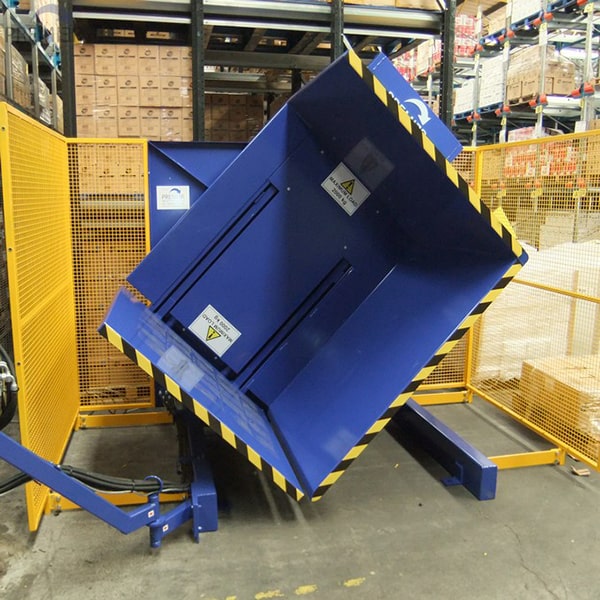
I know a 12 to 24-month payback period might sound ambitious. I’ve seen the skepticism on clients' faces when I first present the numbers. But I’ve also seen their satisfaction when the results prove the calculations right. When I was starting my own factory, every single dollar for new equipment had to be justified with a clear and conservative forecast. I had to prove its worth before I spent a cent. It’s a discipline I’ve carried with me my entire career.
So, let's break down exactly how these numbers are not just possible, but highly probable for your warehouse operation in Vietnam. We will look at the direct savings, explore the hidden benefits that many people overlook, and I’ll even give you the framework to calculate the ROI for yourself.
How Do Automated Pallet Changers Directly Reduce Operational Costs in a Vietnamese Warehouse?
You look at your operational budget and see labor costs climbing steadily. You review the reports on product damage during internal handling and see a number that is always higher than it should be. These are real, tangible costs that eat into your margins every single day. As a leader, you feel the constant pressure to cut these costs without sacrificing the quality or speed your customers expect.
The reality is that manual pallet exchange is slow, physically demanding, and dangerously prone to error. One simple slip can result in an entire pallet of valuable goods being damaged or destroyed. A single strained back from improper lifting can lead to lost workdays, potential compensation claims, and a drop in team morale. These aren't just abstract possibilities; they are the daily realities that continuously inflate your operational expenditures and create risk in your facility.
Automated pallet changers are designed to attack these direct costs head-on. They use technology to transform a multi-person, high-risk, time-consuming task into a safe, one-person, push-button operation. The impact is immediate, and the savings are measurable from the very first day of operation.
In a Vietnamese warehouse, automated pallet changers directly reduce operational costs by minimizing the manual labor required for pallet swapping, virtually eliminating product damage during the transfer process, and cutting down on expenses related to workplace injuries and the inefficient use of other equipment like forklifts.
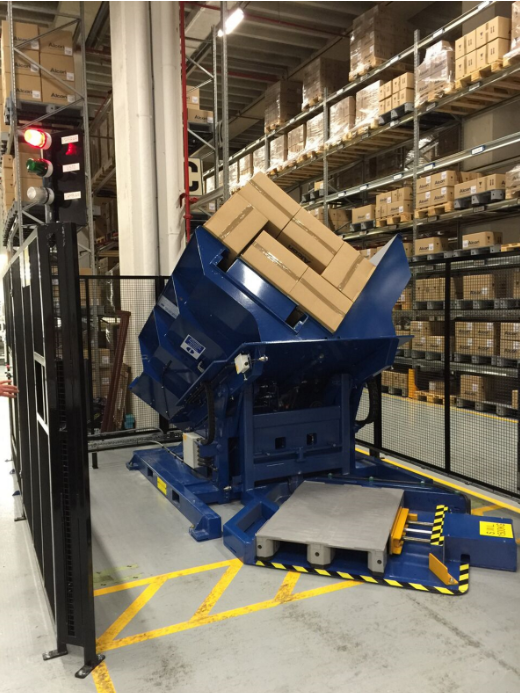
Dive Deeper: A Breakdown of Direct Cost Reductions
Let’s get into the specific mechanics of these savings. As an engineer, I always want to see the underlying principles. These are not magic; they are the result of better processes enabled by smart technology.
Labor Cost Reduction: The Most Obvious Win
The most immediate and easily calculated saving comes from labor. A manual pallet swap often requires two, sometimes three, employees. They have to destack the entire pallet by hand, box by box, then restack it onto the new pallet. This can take anywhere from 10 to 30 minutes, depending on the load's complexity and weight. An automated pallet changer, operated by a single employee, can perform the same task in about 60-90 seconds.
Let's do some simple math. Assume a conservative manual time of 15 minutes for two workers. That's 30 worker-minutes per pallet. An automated machine takes 2 minutes for one worker. That's a saving of 28 worker-minutes for every single pallet you transfer. If you transfer 20 pallets a day, that's a saving of 560 worker-minutes, or over 9 hours of labor, every single day. You can quickly translate this into significant monthly and annual savings based on your local labor rates in Vietnam. This frees up your valuable team members to focus on more productive tasks like order picking, quality control, or inventory management.
Slashing Product Damage Costs
Every time a box is handled manually, there is a risk of it being dropped, crushed, or damaged. This risk is multiplied with every box on the pallet. Automated pallet changers secure the entire load with adjustable clamping pressure and then gently rotate or push it to the new pallet. The product itself is barely disturbed. This is especially critical for fragile goods, high-value electronics, or consumer products where pristine packaging is part of the customer experience. I have worked with clients who saw their damage rates from pallet transfers fall from 3-5% down to less than 0.1%, saving them thousands of dollars annually.
| Metric | Manual Pallet Exchange | Automated Pallet Changer |
|---|---|---|
| Personnel Required | 2-3 Employees | 1 Employee |
| Time per Pallet | 10-30 Minutes | 1-2 Minutes |
| Product Damage Rate | 1-5% (or higher) | < 0.5% |
| Injury Risk | High (lifting, repetitive motion) | Very Low (automated process) |
| Throughput | Low | High |
What Are the Hidden Gains that Boost the ROI of Pallet Inverters Beyond Simple Cost Savings?
You've accounted for the direct cost savings from labor and reduced damage, and the numbers are compelling. But your experience tells you that major operational improvements don't just affect one line item on a budget. They create positive ripple effects that spread across the entire business. You have a feeling there is more to the story.
If you focus only on the most obvious costs, you risk missing the bigger picture and underestimating the true value of the investment. Bottlenecks at the receiving or shipping dock don't just cost labor; they delay shipments, frustrate customers, and create unnecessary stress for your entire team. A reputation for slow or damaged deliveries in today's competitive market can be far more costly than any single operational expense.
The true, transformative value of an automated pallet changer often lies in these "hidden" gains. They are harder to quantify on a spreadsheet initially, but they are just as real. These machines unlock new levels of speed, operational flexibility, and quality control that can turn your warehouse from a simple cost center into a powerful strategic asset for your business.
Beyond direct cost savings, the hidden gains that boost the ROI of pallet inverters are immense. They include dramatically increased throughput speed, enhanced supply chain flexibility, improved hygiene and regulatory compliance for export, and a significant, tangible boost in employee morale and workplace safety.
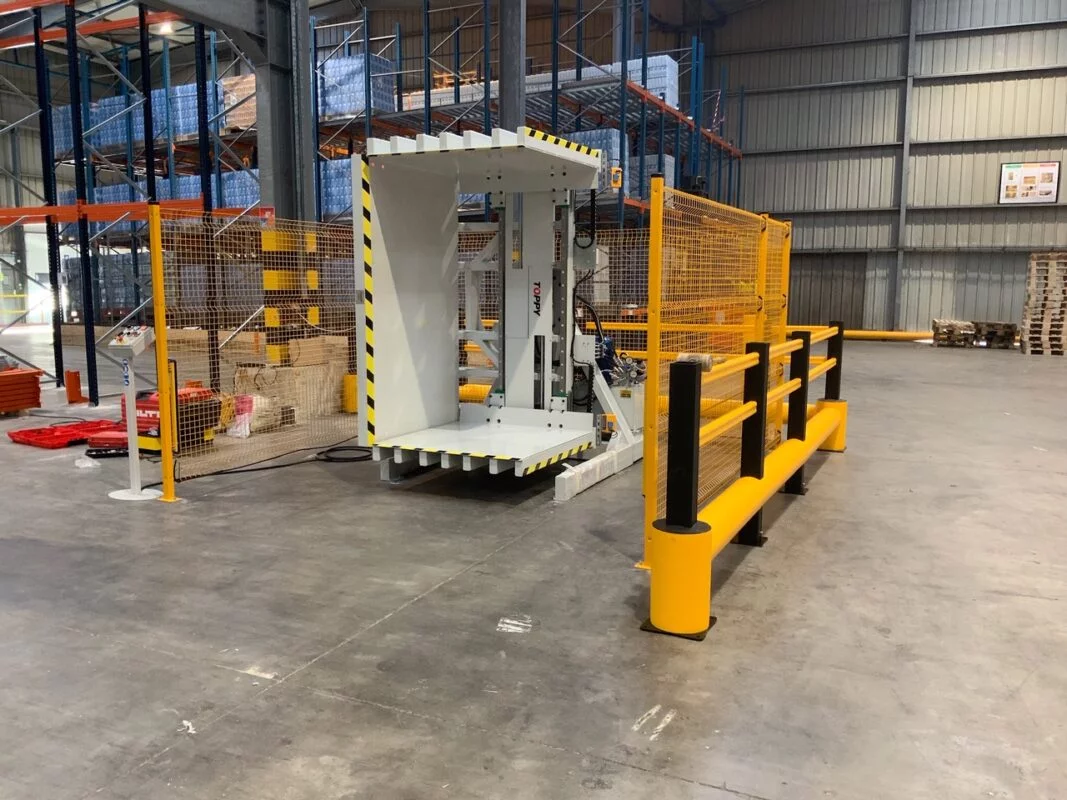
Dive Deeper: Uncovering the Strategic Value
These secondary benefits are what separate a good investment from a great one. They contribute directly to your company's growth, reputation, and long-term profitability.
Throughput and Operational Velocity
In logistics, speed is everything. The ability to process incoming goods faster or prepare outbound shipments quicker is a major competitive advantage. Because an automated pallet changer reduces the transfer time from many minutes to just one or two, it completely eliminates a common bottleneck. This means trucks spend less time waiting at your docks. It means you can process more orders per shift. For businesses in Vietnam focused on export, this increased velocity can be the difference between meeting a tight shipping deadline at a major port like Hai Phong or Ho Chi Minh City, and missing it. This speed translates into higher customer satisfaction and the ability to handle more volume without increasing headcount.
Supply Chain Flexibility and Compliance
Modern supply chains demand flexibility. You might receive goods on low-cost wooden pallets but need to move them onto hygienic plastic pallets for your food-grade or pharmaceutical production area. Or, you need to switch outgoing goods to heat-treated ISPM 15 compliant pallets for export to Europe or North America. Manually, this is a slow, painful process. With a pallet changer, it’s a quick, simple task. It also allows you to easily retrieve a single damaged case from the bottom of a pallet without destacking the entire load. This flexibility makes your entire operation more agile and responsive to customer and regulatory demands.
Enhancing Worker Safety and Morale
We already discussed the direct cost of injuries, but let's talk about the positive side: the value of a safe workplace. Manually lifting hundreds of boxes a day is physically taxing and leads to fatigue and burnout. By automating this task, you show your employees that you value their well-being. This leads to higher morale, greater employee loyalty, and lower staff turnover. A happier, less fatigued team is also a more focused and productive team, which improves quality across all their other tasks. It's a virtuous cycle that pays dividends for years.
| Hidden Value Metric | Manual Process Impact | Automated Process Impact | Strategic Business Value |
|---|---|---|---|
| Throughput Speed | Creates bottlenecks at docks | Eliminates bottlenecks | Faster order fulfillment, higher capacity |
| Supply Chain Agility | Slow to adapt to pallet changes | Instantaneous pallet switching | Easily meet export & hygiene standards |
| Employee Safety | High risk of strain/injury | Drastically reduced physical strain | Improved morale, lower turnover |
| Quality Control | Difficult to inspect bottom layers | Easy access to full pallet | Better ability to catch damaged goods |
How Do You Calculate a Realistic ROI for a Pallet Changer in Your Specific Vietnamese Operation?
The numbers and benefits sound promising. But as a practical business leader, you know that generic examples are not enough. You need to see how this investment applies to your specific warehouse, with your specific labor costs, product values, and operational challenges in Vietnam. A one-size-fits-all calculation is not a solid foundation for a major capital expenditure.
Investing in new equipment without a clear, personalized ROI calculation is a gamble. It is easy to over or underestimate the benefits, which makes it difficult to get buy-in from your finance team and justify the decision. I’ve seen this happen. The fear of making the wrong decision can lead to analysis paralysis and inaction. Ironically, failing to act is often the costliest choice of all, as the inefficiencies continue to drain money from the business every day.
I believe in empowering my clients with knowledge. That is the core mission of SHJLPACK. That’s why I want to give you the exact framework I use to help businesses calculate a realistic ROI. It's a straightforward, step-by-step process. It removes the guesswork from the investment and gives you the hard data you need to move forward with confidence.
To calculate a realistic ROI for a pallet changer in your Vietnamese operation, you must first quantify your total annual savings from labor, product damage, and other efficiencies. Then, subtract the annual operational and maintenance costs of the new machine. Finally, divide the total initial investment cost by this net annual saving to determine the payback period in years.
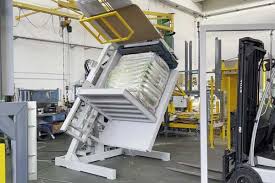
Dive Deeper: Your Step-by-Step ROI Calculation Framework
Let's walk through this together. Grab a notepad or open a spreadsheet. Use real estimates from your own operation to make this exercise as accurate as possible.
Step 1: Calculate Your Total Initial Investment (I)
This is more than just the price on the quote. A true investment cost includes everything needed to get the machine operational.
- Machine Cost: The purchase price of the pallet changer itself.
- Shipping & Logistics: The cost of freight to your facility in Vietnam, plus any import duties or taxes.
- Installation & Commissioning: The cost for technicians to install, test, and commission the machine.
- Training: The cost to properly train your operators and maintenance staff.
- Total Investment (I) = Machine Cost + Shipping + Installation + Training
Step 2: Quantify Your Total Annual Savings (S)
This is where you tally up all the positive financial impacts. Be conservative with your estimates.
- Annual Labor Savings: (Your average hourly labor cost, including benefits) x (Hours of labor saved per day) x (Operating days per year).
- Annual Product Damage Savings: (The average value of one pallet of your goods) x (Your current percentage damage rate during manual transfer) x (Number of pallets transferred per year).
- Other Annual Savings: Include savings from reduced forklift usage, fewer workplace injury claims, or eliminating rental pallet costs.
- Total Annual Savings (S) = Labor Savings + Damage Savings + Other Savings
Step 3: Estimate Annual Operating Costs (C)
Every machine has running costs. It's crucial to include these for an honest calculation.
- Energy Costs: The machine’s power consumption (kW) x hours of operation x your electricity rate.
- Maintenance Costs: A budget for annual preventive maintenance, including lubricants and spare parts (a good rule of thumb is 1-2% of the machine's purchase price).
- Total Annual Operating Costs (C) = Energy Costs + Maintenance Costs
Step 4: The Final ROI Formulas
Now, you just plug your numbers into these simple formulas.
- Net Annual Saving (NAS) = S - C
- Payback Period (in Years) = I / NAS
- *Simple ROI (%) = (NAS / I) 100%**
| ROI Calculation Worksheet | Variable Name | Your Estimate (VND or USD) | Notes |
|---|---|---|---|
| INVESTMENT (I) | One-Time Costs | ||
| Machine Price | I_machine | ||
| Shipping & Install | I_install | ||
| SAVINGS (S) | Annual Recurring Savings | ||
| Labor Savings | S_labor | Based on time studies | |
| Damage Reduction | S_damage | Based on historical data | |
| COSTS (C) | Annual Recurring Costs | ||
| Energy & Maintenance | C_ops | ||
| CALCULATION | Results | ||
| Payback (Years) | I / (S - C) | A result of < 2 is excellent |
What Are the Key Considerations When Choosing a Pallet Changer Supplier to Maximize ROI?
You've completed the math, and the ROI looks strong. The investment makes sense on paper. Now you face the most crucial step: choosing the right machine from the right supplier. My years in this industry have taught me that the quality of the equipment and, just as importantly, the support behind it can make or break your return on investment.
It's tempting to choose the cheapest option available. But this can be a very costly mistake in the long run. A machine that breaks down frequently, lacks adequate local or remote support, or isn't truly suited for your specific product can quickly erase all of your projected savings. You risk ending up with an expensive piece of metal sitting idle on your floor, creating the very same bottlenecks and frustrations you were trying to solve in the first place.
This is why I always advise clients to look for a partner, not just a supplier. A true partner takes the time to understand your unique operational needs. They provide robust, reliable equipment designed for industrial use. And they offer comprehensive support to ensure you maximize your return for years to come. This is the philosophy I built SHJLPACK on, born from my own experiences as an engineer who needed equipment to simply work as promised.
To maximize your ROI when choosing a pallet changer supplier, the key considerations must be the machine's build quality and reliability, the supplier's technical expertise and ability to customize a solution, the availability and quality of their after-sales support and spare parts, and their demonstrated track record as a long-term strategic partner.
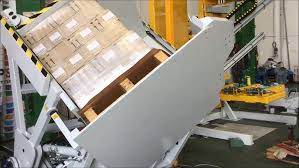
Dive Deeper: Your Supplier Evaluation Checklist
The success of your investment depends heavily on this choice. Here are the critical factors I tell my clients to scrutinize before making a decision.
Machine Quality and Reliability
This is non-negotiable. Look at the physical machine. Is it built from heavy-gauge steel? Are the welds clean and strong? Ask about the components. Are they using high-quality hydraulic pumps, motors, and electronics from reputable brands? What safety features are standard? Look for things like safety guarding, light curtains, and emergency stops. A well-built machine will run reliably for decades with proper maintenance, while a poorly built one will cause constant headaches.
Technical Expertise and Customization
Your load is unique. It has a specific weight, size, and stability. A good supplier won't just sell you a standard model from a catalog. They will ask detailed questions about your product. Can the machine handle your load's dimensions? Can the clamping pressure be adjusted for delicate or heavy products? I remember a client in the steel industry who needed to handle heavy, unstable coils of wire. A standard pallet inverter would have been a disaster. We worked with them to design a custom clamping and support system that could handle the load safely and efficiently. That is the kind of problem-solving a true partner provides.
After-Sales Support and Parts
This is critical, especially for a machine operating in a busy Vietnamese warehouse. What happens when you need help?
- Support: How quickly can they provide technical support? Do they offer remote diagnostics to solve problems quickly? Are their technicians available in your time zone?
- Documentation: Are the operating and maintenance manuals clear, comprehensive, and available in your language?
- Spare Parts: Do they maintain a stock of critical spare parts that can be shipped quickly to Vietnam? A machine can be down for weeks waiting for a small part from overseas. A good supplier plans for this.
| Supplier Evaluation Checklist | What to Look For | Red Flags to Watch For |
|---|---|---|
| Build Quality | Heavy-gauge steel, brand-name components, robust safety features. | Flimsy construction, unknown component brands, minimal safety. |
| Customization | Asks detailed questions about your load, offers options. | Sells a "one-size-fits-all" solution without asking questions. |
| After-Sales Support | Clear service plan, remote support, fast response times. | Vague promises, hard to contact, no local/regional presence. |
| Partnership Mentality | Focuses on your ROI and long-term success, provides references. | Focuses only on the initial price, high-pressure sales tactics. |
Conclusion
An automated pallet changer is more than a machine. It's a strategic tool for cutting costs, boosting efficiency, and securing your competitive edge in Vietnam's dynamic market.

